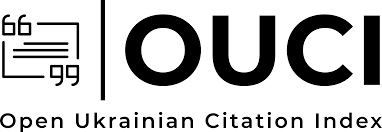Hepatoprotective Effect of Jojoba (Simmondsia chinensis) Against Valproic Acid–Induced Hematological Alterations in Male Rabbits
DOI:
https://doi.org/10.54361/ajmas.258463Keywords:
Valproic Acid, Jojoba, Hematological Parameters, Oxidative Stress, Rabbits.Abstract
Valproic acid (VPA) is a widely used antiepileptic drug known for its hepatotoxic and hematological side effects, including anemia, thrombocytopenia, and bone marrow suppression. In contrast, Simmondsia chinensis (jojoba) is rich in antioxidants such as phenolic compounds, tocopherols, and long-chain esters that may help mitigate oxidative stress and drug-induced hematological toxicity. This study aimed to evaluate the protective role of jojoba against valproic acid–induced hematological alterations in male rabbits. Twenty healthy male rabbits were randomly divided into four groups (n = 5 each): control, jojoba-treated (100 mg/kg), valproic acid-treated (200 mg/kg), and combined jojoba + VPA group. All treatments were administered orally for 6 weeks on consecutive days. Blood samples were collected at the end of the experiment to determine hematological parameters, including hemoglobin (Hb), red blood cells (RBCs), white blood cells (WBCs), platelets (PLAT), and hematocrit (HCT), using an automated hematology analyzer. Data were analyzed using one-way ANOVA followed by Duncan’s post hoc test, with significance set at p < 0.05. Valproic acid significantly reduced several hematological indices compared to the control and jojoba groups. The Hb level decreased to 11.91 ± 0.11 g/dl in the VPA group versus 12.4 ± 0.29 g/dl in the control and 13.5 ± 0.19 g/dl in the jojoba group. The combined jojoba + VPA treatment showed partial recovery (12.56 ± 0.25 g/dl). RBC counts remained relatively unchanged across groups (ranging from 4.99 ± 0.183 to 5.33 ± 0.085 ×10⁶/µl). WBC counts were lowest in the VPA group (5.7 ± 0.28 ×10³/µl) and highest in the jojoba group (6.3 ± 0.12 ×10³/µl). Platelet counts dropped significantly with VPA (214.59 ± 15.717 ×10³/µl) but were markedly higher in the jojoba group (288.97 ± 10.225 ×10³/µl), while the combination treatment showed moderate improvement (262.02 ± 9.85 ×10³/µl). Similarly, hematocrit levels followed the same trend, lowest in VPA (35.33 ± 1.556%) and highest in the jojoba-treated group (40.71 ± 0.548%). Valproic acid administration led to significant reductions in hemoglobin, hematocrit, WBC, and platelet levels, indicating hematotoxicity. Jojoba supplementation showed a protective effect by restoring these parameters toward normal values, likely due to its antioxidant and membrane-stabilizing properties. Co-treatment with jojoba partially alleviated VPA-induced hematological damage, suggesting its potential role as an adjuvant in reducing the hematotoxic effects of valproic acid.
Downloads
Published
How to Cite
Issue
Section
License
Copyright (c) 2025 Fayrouz khaled, Antisar Othman

This work is licensed under a Creative Commons Attribution 4.0 International License.















